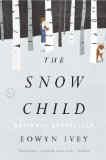Summary | Excerpt | Reading Guide | Reviews | Beyond the Book | Read-Alikes | Genres & Themes | Author Bio

A Novel
by Eowyn IveyThis article relates to The Snow Child
Snegurochka
 Ivey's book more closely follows Ransome's version, which also plays a part in the novel.
After Faina appears, Mabel recalls a fairytale that her father, a professor of literature, used to read to her from a Russian text. When she recovers the book, she returns to it again and again in both fear and hope, mining it for clues and answers to Faina's fate. If you don't want to find out what happens to Faina, don't read the fairy tales first - the novel reveals details of the fairytales at key points as Mabel discovers them, and the parallels are quite magical.
Ivey's book more closely follows Ransome's version, which also plays a part in the novel.
After Faina appears, Mabel recalls a fairytale that her father, a professor of literature, used to read to her from a Russian text. When she recovers the book, she returns to it again and again in both fear and hope, mining it for clues and answers to Faina's fate. If you don't want to find out what happens to Faina, don't read the fairy tales first - the novel reveals details of the fairytales at key points as Mabel discovers them, and the parallels are quite magical.Snow Maiden painted by Viktor Vasnetsov (1899)
Filed under Books and Authors
![]() This "beyond the book article" relates to The Snow Child. It originally ran in February 2012 and has been updated for the
November 2012 paperback edition.
Go to magazine.
This "beyond the book article" relates to The Snow Child. It originally ran in February 2012 and has been updated for the
November 2012 paperback edition.
Go to magazine.
Your guide toexceptional books
BookBrowse seeks out and recommends the best in contemporary fiction and nonfiction—books that not only engage and entertain but also deepen our understanding of ourselves and the world around us.